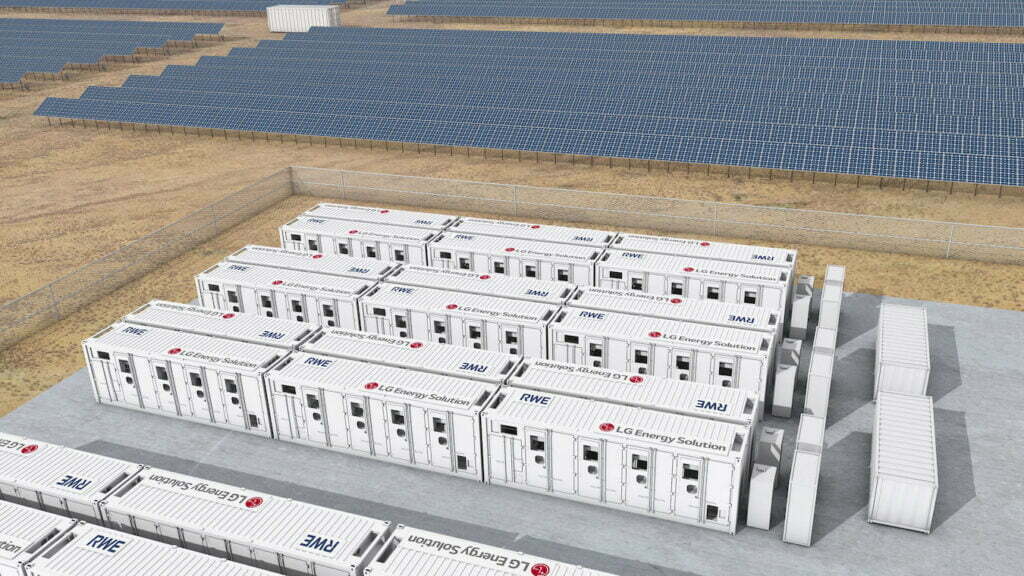
Industry-watchers will closely follow how the recently completed acquisition of energy storage system integrator NEC ES by LG Energy Solution pans out.
Oliver Forsyth, research analyst with the Climate and Sustainability team of information provider IHS Markit, said it is a little early to predict what sort of wider industry impact the takeover of one of the battery energy storage industry’s early leaders by one of its biggest battery OEMs will have.
However, the direction taken for the system integration business, now renamed LG Energy Solution Vertech Inc by its new owner, “will definitely be an interesting one to keep an eye on going forwards,” Forsyth said.
NEC ES had been one of the leading players in the industry until its mid-2020 exit, with reports citing a lack of profitability as a major factor. Closing in on a gigawatt of installations, including a foothold in the US market, parent company NEC Corporation in Japan said it would no longer be pursuing new projects, although it retained NEC ES’ long-term O&M commitments.
IHS Markit research indicates that NEC ES still holds a 4% market share for installed and planned battery energy storage system (BESS) projects, nearly two years after disbanding nearly all of its operations.
“It just goes to show just how competitive this space is. It is a challenging market to make profit in,” Forsyth told Energy-Storage.news.
“I think NEC, the parent company, decided that it wasn’t worth trying to play the long game, to try to figure out how this could become profitable and for that reason, they exited, which is definitely a shame for the industry as a whole.”
Many of NEC ES’ key personnel have moved on, with the likes of CEO Steve Fludder now heading up LS Energy Solutions — the similarly-named energy storage subsidiary of another Korean conglomerate — which means that a “lot of capability potentially didn’t come with this acquisition,” the industry might see a revitalisation of what the integrator had been contributing, the analyst said.
Until last week, when the deal closed, LG Energy Solution (LGES) had not really indicated what its post-takeover strategy might be. The company has now said the takeover strengthens its capabilities as a system integrator and that it will pursue vertical integration from its battery OEM business all the way downstream to deployment.
New direction for battery OEMs
Oliver Forsyth said IHS Markit has observed a trend for battery manufacturers to move downstream into the project business and systems technology provision: the likes of BYD offering a fully containerised BESS system with integrated power conversion systems (PCS), CATL and Samsung SDI as well as LGES have launched their own plug and play solutions.
The analyst noted that with the exception of BYD, the above examples exclude the PCS so these products are focused on DC-connected projects only. That means they are aimed at the solar-plus-storage market, especially in the US, where that segment is growing rapidly.
However, that only allows them to chase a portion of the overall demand — albeit a considerable portion, Forsyth said — but does restrict their ability to gain market share in projects that demand “that more complex integration from the AC level up,” involving elements like software and configuration process that battery OEMs “haven’t really fully invested or developed enough capability in yet to offer”.
“The acquisition by LGES of NEC ES is a step in that direction, we might see in the future, a solution where a battery OEM can do everything. There’s a few things they need to get there. The software, the O&M capability, the ability to offer those longer term warranties, as well as managing that asset, as well as that in-house integration capability of the PCS.”
It’s worth noting that LGES was a battery cell supplier to NEC ES for many of its projects worldwide, so there may also be an element that LGES wants to make sure assets built with its cell continue to operate to customer expectations, Forsyth also said.
Other things to consider will be how LGES takes on the NEC ES software and controls platform, AEROS, which had had a lot of time and resources invested into it.
In terms of profitability, Forsyth said NEC ES was unique in the sense that it was “trying to create very unique projects every time, trying to tailor its design to each project, which meant they were obviously very high quality, but at the same time, the profitability was very low”.
Even in the short time since its industry exit was announced, NEC ES’ main competitors including Fluence, Wärtsilä and Powin Energy have all brought out product and solution lines with a much higher level of standardisation.
“We’re seeing these slimmed down solutions: really trying to optimise space, manage how much balance of plant you need per battery module, making sure that your fire suppression systems is maximised across as many solutions as you can, trying to minimise the containerisation, really trying to slim down on the amount of metal you’re using there, to really try to optimise costs. I think that we’ll continue to see that happening.”
It will be interesting indeed to see what direction LGES takes on these aspects of the business. Yesterday (20 February), the manufacturer announced the appointment of Dr Peter Kyungsuk Pyun, in the newly-created role of chief digital officer, tasked with “digitally transforming” the company’s global facilities into “data-centric operations”.
“Based on his accumulated experience in world-renowned firms, we expect LGES to take a further step forward in battery manufacturing processes by utilising AI and big-data technology,” the company said in a statement and again it will be interesting to see if this new capability is leveraged into its more downstream BESS activities through LG Energy Solution Vertech.

